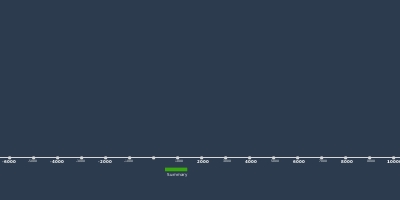Victorian age (1 gen 1831 anni – 1 gen 1901 anni)
Descrizione:
Victorian ageThe 19th century was one of rapid development and change, far swifter than in previous centuries. During this period England changed from a rural, agricultural country to an urban, industrialised one. It took many years for both government and people to adjust to the new conditions.
Strictly speaking, the Victorian era began in 1837 and ended with Queen Victoria's death in 1901, but the period can be stretched to include the years both before and after these dates, roughly from the Napoleonic Wars until the outbreak of World War I in 1914.
The industrial revolution
This was made up of technological, scientific and industrial innovations (e.g. mass production, steam engines, railways, sewing machines, gas and electric light, the telegraph) that led to an enormous expansion of production, particularly through the factory system. There were huge social costs: the dehumanisation of work, child labour, pollution, and the growth of cities where poverty, filth and disease flourished. Child labour and poverty were also a feature of rural life, where farm work involved long hours, very low pay and exposure to all weathers.
Population growth and migration
Between 1801 and 1871 alone the population of the UK doubled. Migration in both directions was a feature of Victorian life. Many Britons left the UK for North America or the colonies in search of a better life. The Irish poor formed a large number of these migrants, especially after the Irish potato famine in 1845: the Irish moved in large numbers to England and Scotland, as well as abroad. Within the UK as a whole, people moved from the countryside into the new industrial cities to find work. Migrants from across the world also settled in Britain, notably Jews from Europe and Russia.
Social reforms
As a result of early campaigns by people such as Michael Sadler and the Earl of Shaftesbury, and reports by parliamentary commissions, legislation protecting the child and adult workers began to be enacted. Important reforms included legislation on child labour, safety in mines and factories, public health, the end of slavery in the British Empire, and education (by 1880 education was compulsory for all children up to the age of 10). There was also prison reform and the establishment of the police.
The rise of the middle classes
Society was hierarchical, yet there was much social and geographical mobility. Self-made entrepreneurs used their new wealth to rise in society, building large houses, educating their children and employing domestic servants (by the 1880s 1.25 million people were employed in domestic service – more than in any other work category).
The growth of democracy
The franchise was gradually extended to the working classes until by 1918 there was universal suffrage for men. The fight for votes for women was in full swing, but it was not until 1930 that women achieved the same voting rights as men.
Expansion of the Empire
Before the start of the 19th century, Britain had already lost its American Empire and was acquiring another in India. Her accumulation of additional territory across the globe continued steadily. The Great Exhibition of 1851 displayed the wonders of both industry and Empire. Tied up with the Empire were Britain's trading dominance, naval and military strength, and competition for territory against other European nations. By the end of Victoria's reign imperialists could boast that the sun never set upon the British Empire.
The idealisation of the family
The ideal of a family – respectable and loving – dominated the Victorian period. The cult of the home grew steadily, with Queen Victoria and her family providing a role model for the nation. Women were expected to stay at home and bring up the family, but the reality for many poor families was that women had to work, and many single middle-class women also had to work.
The growth of leisure pursuits
The 19th century saw the beginning of mass leisure: seaside holidays, religious activities, and the development of public parks, museums, libraries, spectator sports, theatres and music halls.
Aggiunto al nastro di tempo:
Data:
1 gen 1831 anni
1 gen 1901 anni
~ 70 years
